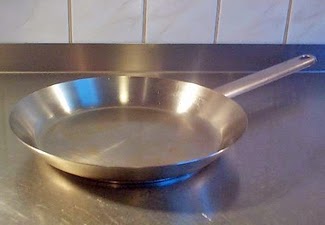Cool Summer Soup Recipes A Food Processor
Cool Summer Soup Recipes A Food Processor: Summer is coming and so is the hot weather. Nobody likes to cook in the heat of summer. A really hot meal on a hot day is almost as unpopular. It could be that a cool, easy to prepare summer soup is just what you need.
Below are 3 recipes for soups that can be made in your food processor or blender. If you have the ingredients on hand, none of them take more than 10 minutes to make. They are all delicious, nutritious, and really refreshing on a hot day. While the recipes all suggest you use a food processor, you can get very good results by using a blender or hand blender too.
 |
| Cool Summer Soup Recipes A Food Processor |
These are all very simple recipes, so don’t be shy to modify them and get a taste that your whole family can enjoy.
Here are the recipes.
Summer Vegetarian Soup
This is great tasting soup with a touch of Italy included. It is super easy to make and very healthy. It is particularly good on a hot summer day
an avocado – skin and pit removed of course
4 Roma tomatoes – they may not be quite juicy enough (see below)
Basil to taste (Thai basil is really good in this)
4 tablespoons of extra virgin olive oil
Summer Vegetarian Soup Process
How easy is this soup? Simply throw everything into your food processor and mix until it is smooth. If you find that it is more like a smoothie than soup, simply add more liquid (or swap one of the Roma tomatoes for another more juicy variety). Pour into bowls, garnish as you wish (minced chives are nice) and enjoy.
Cool Summer Soup Recipes A Food Processor
Sensational Salsa & Black Bean
This soup is a very simple soup that takes just a few minutes to prepare. It can be served hot or cold, but always benefits from being heated.
Roughly 4 servings
Sensational Salsa & Black Bean INGREDIENTS:
2 normal sized cans of black beans (any brand is OK, but try for low salt)
1 1/2 cups soup stock (Just use chicken, beef, or vegetable bullion)
1 cup of your favorite salsa (chunky makes a heartier soup)
1 teaspoon cumin (best to use fresh ground in the soup and you can sprinkle seeds on top too)
1/4 cup of sour cream
1-2 green onions chopped fine
Sensational Salsa & Black Bean Process:
Put the beans, salsa, cumin, and soup stock into a food processor (a blender is OK too). Puree the mixture until it is creamy in texture. Pour the mixture into a mid-sized pot and heat on low-medium until it is completely hot. This allows the flavours to merge. If you are going to serve it cold, move it to the fridge to cool off till it is time to eat. To eat it hot, simply serve into bowls and garnish with the onions and some of the sour cream.
Cool Summer Soup Recipes A Food Processor
MANGO SOUP
Mangos are simply divine. They are great as a fruit, mixed into drinks, added to salads. They also make a really good cool summer soup which is explained below.
MANGO SOUP Ingredients:
1 large RIPE mango (it will be soft, no squishy, to touch)
2 cups chicken soup stock (make your own or use bullion if you must)
1 TBSP lemon grass (available in most Asian markets, it looks like long greenish reeds when you buy it)
1 TBSP ginger – Freshly chopped is best
Ground chili peppers to taste
1 cup yogurt (2% plain is best)
2 TBSP cilantro (chinese parsley) chopped fine
MANGO SOUP Process:
Chop mango and put in food processor. Mix briefly and then put in the ginger, lemon grass, chili and 1/2 cup of soup stock. Mix again till everything becomes very smooth. Move the soup into another bowl (be sure it is large enough) and mix in first the rest of the stock, and then the yogurt. This is best served cold, so put in fridge till you are ready to eat. Then put into bowls and serve with the cilantro as the garnish.
As the temperature starts to go up give these soups a try. They are all very simple and will add a new delicious and healthy dimension to your summer diet.
Related Posts:
1. Cuisinart Prep Plus Food Processors
2. Cuisinart DFP-14 Custom 14-Cup Food Processor
3. Breville 800JEXL Juice Fountain Elite 1000-Watt Juice Extractor



